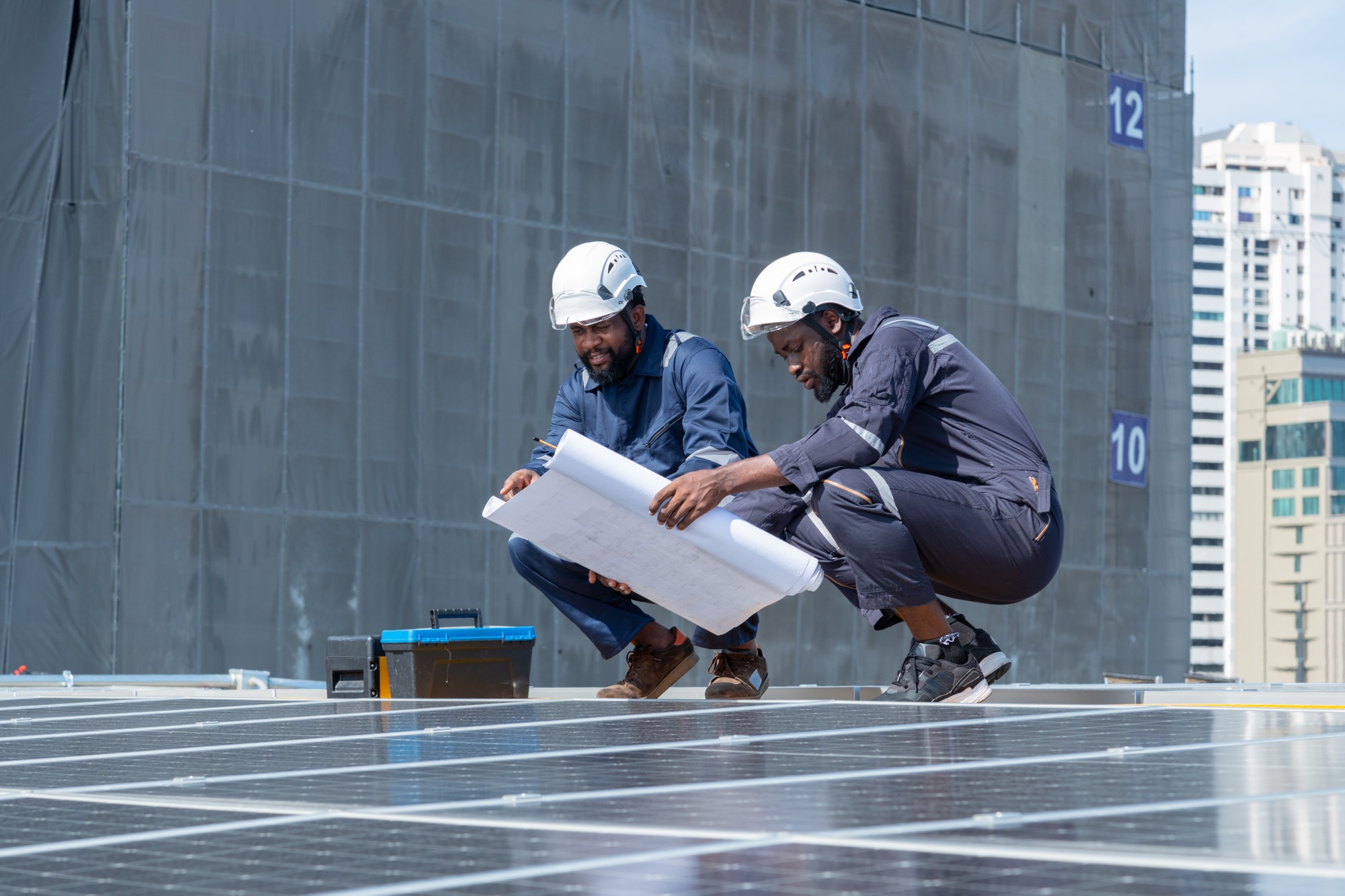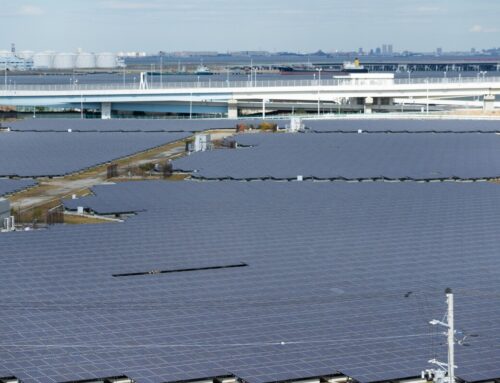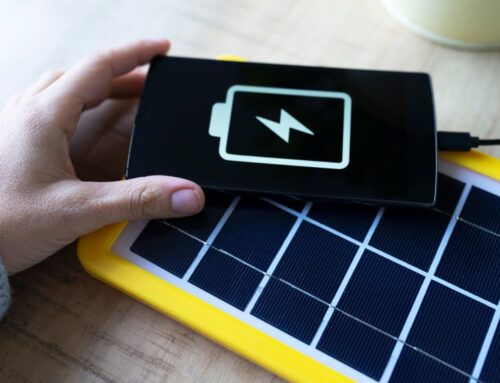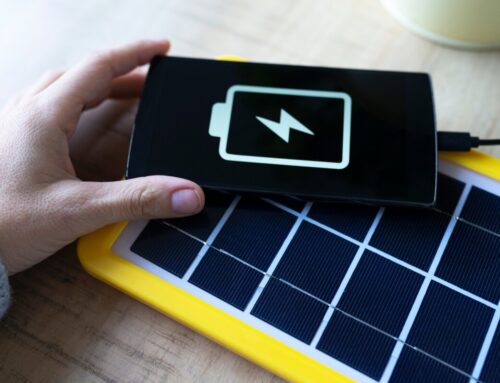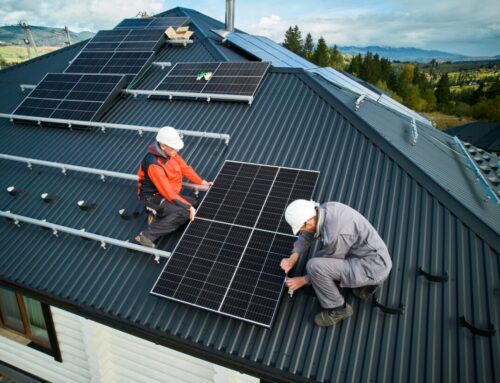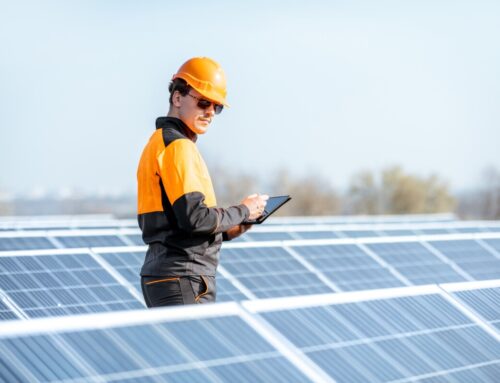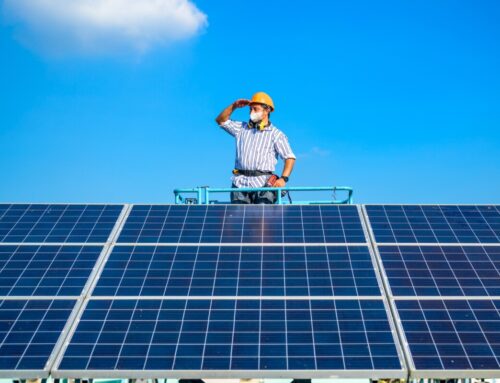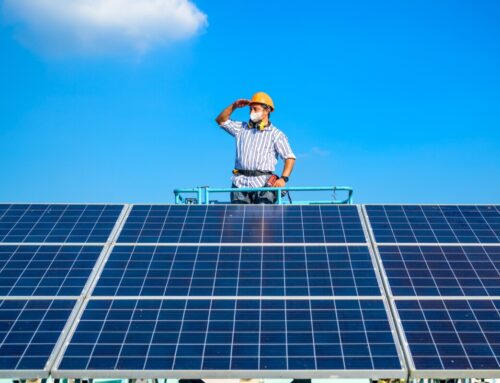Solar Inverters: Key to Energy Conversion
Imagine harnessing the sun’s abundant energy, only to find it unusable in its raw form. That’s where solar inverters for energy conversion come into play, acting as the crucial bridge between solar panels and your home’s electrical system. The problem lies in the fact that solar panels generate direct current (DC) electricity, which is not compatible with most household appliances that run on alternating current (AC). Solar inverters promise to solve this issue by efficiently converting DC into AC, making solar energy usable and accessible for everyday needs.
Key Functions of Solar Inverters
- Conversion of Energy: The primary role of solar inverters is to convert the DC electricity generated by solar panels into AC electricity. This conversion is essential for integrating solar power into the existing electrical grid and for powering home appliances.
- Maximizing Energy Output: Solar inverters also optimize the energy output from solar panels by tracking the maximum power point (MPP) of the solar array. This ensures that the system operates at its highest efficiency, even under varying weather conditions.
- Monitoring and Safety: Modern solar inverters come equipped with monitoring capabilities, allowing users to track energy production and system performance. They also provide safety features by automatically shutting down in case of electrical faults, protecting both the system and the household.
How Do Solar Inverters for Energy Conversion Work?
Solar inverters for energy conversion play a crucial role in transforming the sun’s energy into usable electricity for our homes and businesses. Imagine having a solar panel system that captures sunlight but can’t convert it into the electricity you need. That’s where solar inverters come in, solving the problem by converting the direct current (DC) generated by solar panels into alternating current (AC), which is the standard electrical current used by most household appliances. This conversion is essential for integrating solar energy into the power grid and ensuring that your solar system operates efficiently and effectively.
Key Functions of Solar Inverters
- DC to AC Conversion: The primary function of solar inverters is to convert the DC electricity generated by solar panels into AC electricity.
- Grid Interaction: Solar inverters synchronize the solar power with the grid’s voltage and frequency, allowing excess energy to be fed back into the grid.
- System Monitoring: Many modern inverters come with monitoring capabilities, providing real-time data on energy production and system performance. By efficiently managing these tasks, solar inverters ensure that the energy conversion process is seamless, maximizing the potential of solar energy systems and contributing to a sustainable energy future.
Types of Solar Inverters: Which One Suits Your Needs?
Solar inverters are the unsung heroes of energy conversion, transforming the direct current (DC) generated by solar panels into alternating current (AC) that powers our homes and businesses. Without them, the energy harnessed from the sun would remain unusable for most of our daily needs. The promise of solar inverters lies in their ability to maximize energy efficiency and ensure a seamless transition from solar power to usable electricity, making them a crucial component in any solar energy system. Choosing the right solar inverter for energy conversion depends on your specific requirements and the scale of your solar installation. There are several types of solar inverters, each with unique features and benefits.
Understanding these can help you make an informed decision that optimizes your solar energy system’s performance.
String Inverters
- Ideal for residential and small commercial installations. – Connects multiple solar panels in a series, converting DC to AC. – Cost-effective and easy to maintain.
Microinverters
- Suitable for maximizing energy output in installations with shading issues. – Installed on each solar panel, allowing individual panel optimization.
- Offers enhanced monitoring and flexibility.
Read Also: How Do Solar Panels Generate Power for Your Home?
Central Inverters
- Best for large-scale solar farms and commercial projects.
- Handles high power capacity, converting energy from multiple strings of panels.
- Efficient for large installations but requires significant space and cooling systems.
The Impact of Solar Inverters on Energy Efficiency
Imagine harnessing the power of the sun to fuel your home or business efficiently. Solar inverters for energy conversion play a pivotal role in this process, acting as the bridge between the sun’s energy and usable electricity. The problem many face is understanding how these devices transform solar energy into a form that powers everyday appliances. The promise of solar inverters lies in their ability to maximize energy efficiency, ensuring that the energy captured by solar panels is effectively converted and utilized.

Curious about solar? Let us help you discover how solar energy can revolutionize your home and save you money. Request Your Free Solar Estimate at SOLAR ENERGY
How Solar Inverters Work
- Conversion Process: Solar inverters convert the direct current (DC) generated by solar panels into alternating current (AC), which is the standard electrical current used by most household appliances.
- Maximizing Efficiency: By optimizing the energy conversion process, solar inverters ensure minimal energy loss, enhancing the overall efficiency of solar power systems.
Benefits of Solar Inverters
- Energy Monitoring: Many modern solar inverters come with monitoring systems that allow users to track energy production and consumption, helping to identify and rectify inefficiencies.
- Grid Compatibility: They ensure that the converted energy is compatible with the grid, allowing for seamless integration and potential energy savings through net metering.
Why Are Solar Inverters Crucial for Renewable Energy Systems?
Imagine harnessing the sun’s power to fuel your home or business. Sounds futuristic, right? However, there’s a small hitch: solar panels generate direct current (DC) electricity, which isn’t compatible with the alternating current (AC) systems that power most of our appliances. This is where solar inverters for energy conversion come into play.
They bridge the gap, converting DC into AC, making solar energy usable and efficient for everyday needs.
The Role of Solar Inverters in Energy Conversion
Solar inverters are the unsung heroes of renewable energy systems. Without them, the energy captured by solar panels would remain untapped. These devices not only convert DC to AC but also optimize the energy output by tracking the maximum power point of the solar panels. This ensures that your solar system operates at peak efficiency, even when sunlight conditions vary.
Moreover, modern inverters come equipped with smart technology, allowing for real-time monitoring and diagnostics, which enhances system reliability and performance.
Benefits of Using Solar Inverters
- Energy Efficiency: By converting and optimizing energy, solar inverters ensure minimal energy loss.
- System Longevity: Regular monitoring and diagnostics help in maintaining the health of the solar system.
- Grid Compatibility: They ensure that the solar energy produced is compatible with the grid, facilitating seamless integration and reducing reliance on fossil fuels. Thus, solar inverters for energy conversion are pivotal in making renewable energy systems viable and sustainable.
Choosing the Right Solar Inverter: Key Considerations
Solar inverters for energy conversion play a crucial role in transforming the sun’s energy into usable electricity for homes and businesses. Without them, the direct current (DC) generated by solar panels would remain unusable for most electrical devices, which operate on alternating current (AC). This conversion is essential, yet choosing the right solar inverter can be daunting due to the variety of options available. However, understanding the key considerations can simplify the decision-making process and ensure optimal energy efficiency.
Types of Solar Inverters
When selecting solar inverters for energy conversion, it’s important to consider the different types available: string inverters, microinverters, and power optimizers.
String inverters are cost-effective and suitable for installations with consistent sunlight exposure. Microinverters, on the other hand, are ideal for roofs with shading issues, as they optimize each panel individually. Power optimizers combine the benefits of both, offering panel-level optimization while using a central inverter. Each type has its advantages, so assessing your specific needs and site conditions is crucial.
Efficiency and Compatibility
Efficiency and compatibility are other vital factors to consider.
High-efficiency solar inverters ensure maximum energy conversion, reducing waste and enhancing overall system performance. Additionally, compatibility with your existing solar panels and electrical setup is essential to avoid potential issues and additional costs. By focusing on these aspects, you can select a solar inverter that not only meets your energy needs but also supports long-term sustainability and savings.
How SolarEnergy Can Help You Find the Perfect Solar Inverter
Are you curious about the role of solar inverters in energy conversion? Solar inverters are the unsung heroes of solar power systems, transforming the direct current (DC) generated by solar panels into alternating current (AC) that powers our homes and businesses. Without them, the energy harnessed from the sun would remain unusable for most electrical appliances. However, finding the right solar inverter can be challenging, given the variety of options available. At SolarEnergy, we promise to simplify this process by guiding you to the perfect solar inverter tailored to your needs. Understanding the intricacies of solar inverters for energy conversion is crucial.
Solar inverters come in various types, each with unique features and benefits.
- String Inverters: Ideal for residential setups, they connect multiple solar panels in a series.
- Microinverters: Offer flexibility and efficiency by attaching to individual panels, optimizing performance.
- Hybrid Inverters: Combine solar and battery storage, perfect for maximizing energy use. SolarEnergy provides comprehensive resources and expert advice to help you navigate these options, ensuring you make an informed decision that enhances your solar energy system’s efficiency and reliability.

